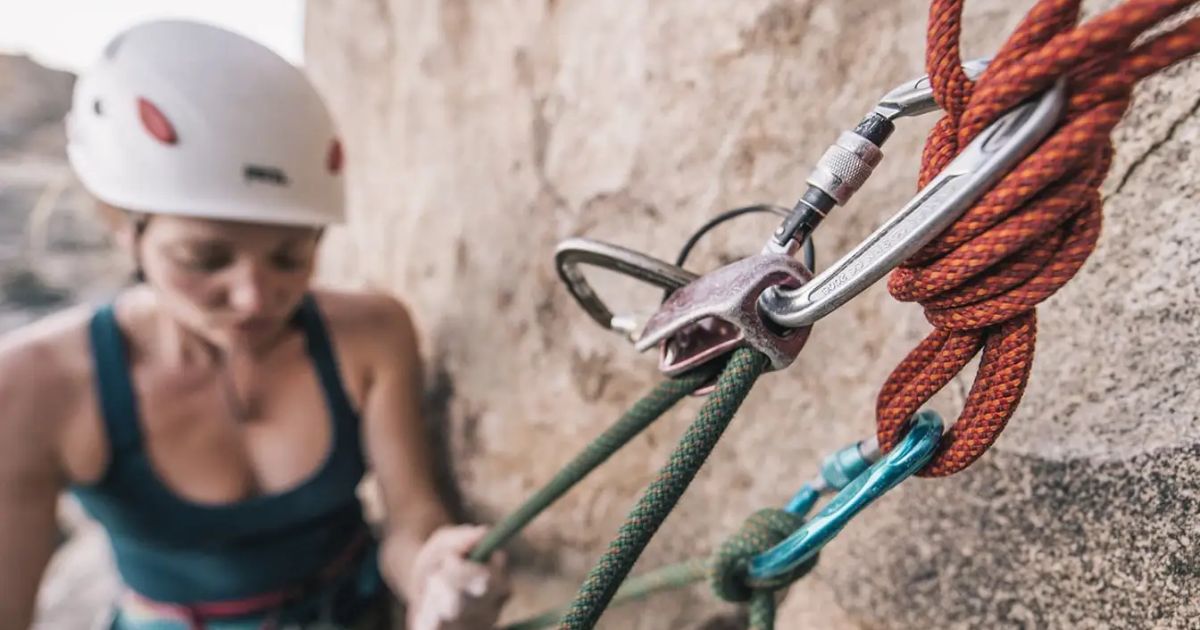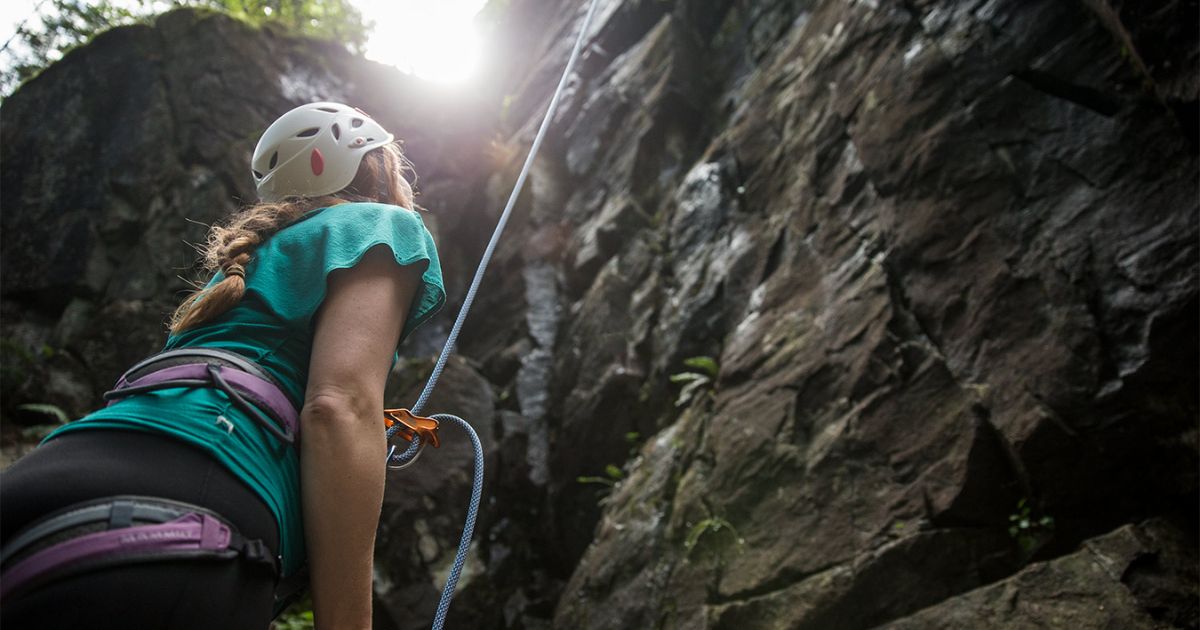Looking to conquer the crag? Discover the essential attire for your rock climbing adventure. From safety gear to weather-appropriate layering, this article will guide you on what to wear to ensure comfort, protection, and performance. Whether you’re a seasoned climber or just starting out, having the right gear is crucial for a successful ascent. So, lace up your climbing shoes, buckle your harness, and get ready to tackle the vertical world with confidence and style.
Key Takeaways
- Safety gear such as a climbing helmet, climbing harness, gloves, and knee pads are essential for protection against potential hazards during rock climbing.
- Choosing the right type of climbing shoes, whether it be neutral, aggressive, moderate, or approach shoes, can greatly impact performance and comfort in different climbing environments.
- Moisture-wicking clothing helps manage sweat, regulates body temperature, and prevents discomfort and chafing while climbing.
- Layering with a moisture-wicking base layer, insulating layer, and waterproof and windproof shell allows for adjustment to changing weather conditions during rock climbing.
Safety Gear
When rock climbing, it is essential to wear the appropriate safety gear to ensure maximum protection and minimize the risk of injury. Safety gear is designed to provide climbers with the necessary protection against falls, impacts, and other potential hazards. The most basic safety gear includes a climbing helmet, which protects the head from falling rocks or accidental hits against the wall.
A climbing harness is also crucial as it keeps the climber securely attached to the rope, preventing them from falling. Additionally, climbers should wear proper climbing shoes that provide excellent grip and support on various surfaces. Other safety gear may include gloves for protection against abrasions, knee pads for added support, and a chalk bag to enhance grip. By wearing the right safety gear, climbers can feel confident and secure, allowing them to focus on the thrill and challenge of the climb.
Climbing Shoes
Climbing shoes are an essential piece of rock climbing gear that provide climbers with the necessary grip and support to navigate various surfaces. These specialized shoes are designed to fit snugly and provide maximum surface contact, allowing climbers to rely on their feet and maintain balance while scaling walls or boulders.
When choosing climbing shoes, it’s important to consider factors such as fit, type of climbing, and personal preference. The table below provides a brief overview of different types of climbing shoes and their characteristics:
| Type of Climbing Shoe | Characteristics |
|---|---|
| Neutral | Versatile and comfortable for all-day climbing |
| Aggressive | Designed for overhanging and steep terrain |
| Moderate | Suitable for both indoor and outdoor climbing |
| Approach | Ideal for hiking and scrambling to climbing areas |
Finding the right climbing shoes is crucial for both safety and performance. It’s recommended to try on multiple pairs and consult with experienced climbers or gear experts to ensure the perfect fit. Remember, your climbing shoes are your connection to the rock, so choose wisely and enjoy the exhilarating experience of rock climbing.
Moisture-wicking Clothing
To ensure comfort and performance during rock climbing, it is essential to wear moisture-wicking clothing that helps manage sweat and keeps the body dry. Rock climbing is a physically demanding activity that can cause the body to generate a significant amount of heat and perspiration. Moisture-wicking clothing is designed to pull moisture away from the skin and onto the outer surface of the fabric, where it can evaporate more easily.
This helps to regulate body temperature and prevent the build-up of sweat, which can lead to discomfort and chafing. Additionally, moisture-wicking clothing is often made from breathable materials that allow air to circulate, further enhancing comfort during intense climbing sessions. By choosing the right moisture-wicking clothing, climbers can stay dry, cool, and focused on their ascent. Now let’s move on to the next essential gear item – the climbing harness.
Climbing Harness
When it comes to rock climbing, a properly fitted and comfortable climbing harness is essential for a safe and enjoyable climbing experience. The harness should fit snugly around the waist and legs, providing support without restricting movement. Additionally, safety and durability are key considerations when choosing a harness, ensuring that it can withstand the rigors of climbing and protect you in case of a fall.
Proper Fit and Comfort
Achieving a secure and comfortable fit is essential when selecting a climbing harness. A properly fitted harness ensures that you can move freely and confidently while climbing, without any discomfort or restriction. To achieve the perfect fit, start by measuring your waist and leg sizes accurately. Many harnesses offer adjustable leg loops and waist belts, which allow for a customized fit.
It is important to remember that a climbing harness should fit snugly but not be too tight, as this can cause discomfort and restrict blood flow. Additionally, consider the padding and construction of the harness, as this can greatly impact comfort. Look for harnesses with breathable and moisture-wicking materials to keep you cool and dry during intense climbing sessions. By prioritizing fit and comfort, you can focus on your climbing goals and enjoy a sense of belonging in the climbing community.
Safety and Durability
Ensuring the safety and durability of a climbing harness is paramount for rock climbers. A climbing harness is a crucial piece of equipment that provides support, protection, and a sense of security while scaling vertical terrains. When choosing a climbing harness, it is important to consider its construction, materials, and certifications. Look for a harness that is made from high-quality materials such as nylon or synthetic fibers, as these offer excellent durability and strength.
Additionally, check for certifications such as UIAA or CE, which ensure that the harness meets international safety standards. Reinforced stitching, robust buckles, and adjustable leg loops are also features to look for in a climbing harness. Remember, investing in a reliable and durable climbing harness is essential for your safety and peace of mind while rock climbing.
Layering for Weather Conditions
How can one effectively layer clothing for varying weather conditions while rock climbing? Layering is key to staying comfortable and protected while out on the rocks. When it comes to rock climbing, the weather can change quickly, so it’s important to be prepared. Start with a moisture-wicking base layer to keep sweat away from your skin.
Next, add an insulating layer such as a fleece or down jacket to trap heat. Finally, top it off with a waterproof and windproof shell to protect you from the elements. Remember to choose fabrics that are lightweight and breathable to prevent overheating. By layering appropriately, you can easily adjust your clothing to suit changing weather conditions and stay comfortable throughout your climb.
Moving on to accessories and extras…
Accessories and Extras
To complete your rock climbing outfit, consider incorporating essential accessories and extras. These items can enhance your climbing experience and provide additional safety and convenience. Here are four accessories and extras that every climber should consider:
- Climbing chalk: Chalk helps to keep your hands dry, improving grip and reducing the chances of slipping. It is a must-have accessory for any climber, especially during challenging climbs.
- Climbing gloves: Gloves can protect your hands from abrasions and blisters. Look for gloves that are lightweight, breathable, and offer good dexterity for a comfortable and secure grip.
- Helmet: A helmet is crucial for protecting your head from falling rocks or accidental impacts. It should fit snugly and meet safety standards to ensure maximum protection.
- Carabiners and quickdraws: These tools are essential for attaching yourself to ropes and anchors. Choose lightweight, durable carabiners and quickdraws that are easy to use and reliable.
Frequently Asked Questions
What Type of Sunscreen Should I Use While Rock Climbing?
When it comes to rock climbing, it is important to protect your skin from harmful UV rays. Choosing a sunscreen with a high SPF and water-resistant properties is recommended to ensure maximum protection during your climb.
Can I Wear Regular Athletic Socks With My Climbing Shoes?
Regular athletic socks may not provide the necessary grip and support when wearing climbing shoes. It is recommended to use specialized climbing socks that are designed to enhance comfort, prevent blisters, and improve overall performance.
Are There Any Specific Recommendations for Clothing Materials That Are Best for Rock Climbing?
When it comes to rock climbing, specific recommendations for clothing materials are essential for comfort, mobility, and safety. Choosing materials that are breathable, moisture-wicking, durable, and stretchy can greatly enhance your climbing experience.
Should I Bring My Own Helmet or Are They Provided by the Climbing Gym?
When it comes to rock climbing, safety should always be a top priority. While some climbing gyms may provide helmets, it is highly recommended to bring your own to ensure proper fit and protection.
Are There Any Restrictions on Wearing Jewelry or Accessories While Rock Climbing?
When it comes to rock climbing, it is important to consider any restrictions on wearing jewelry or accessories. Safety should always be the top priority, and certain items may pose a risk or hinder movement.
Conclusion
In conclusion, when it comes to rock climbing, it is essential to wear the appropriate gear for safety and comfort. This includes climbing shoes, moisture-wicking clothing, a climbing harness, and any necessary safety equipment. Layering your clothing will help you adapt to different weather conditions, and don’t forget to consider any accessories or extras that may enhance your climbing experience. So, next time you head out to the rocks, make sure you’re dressed for success and ready to conquer any challenge that comes your way.










